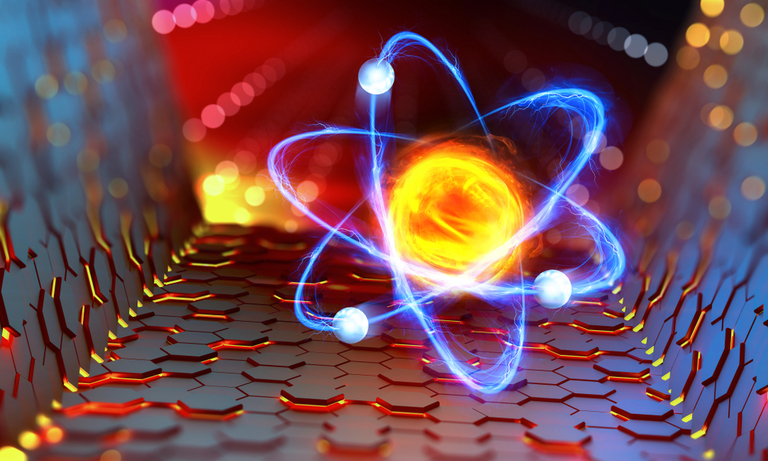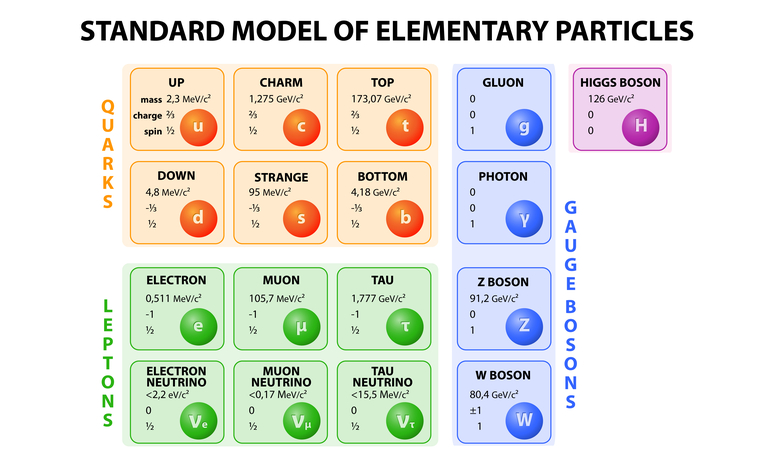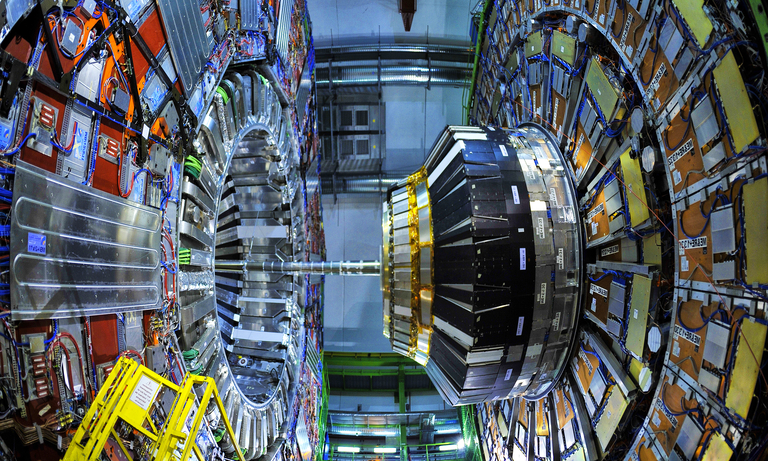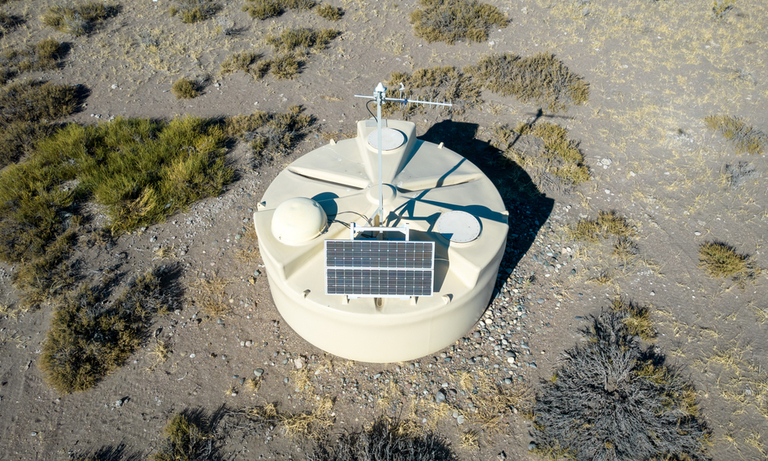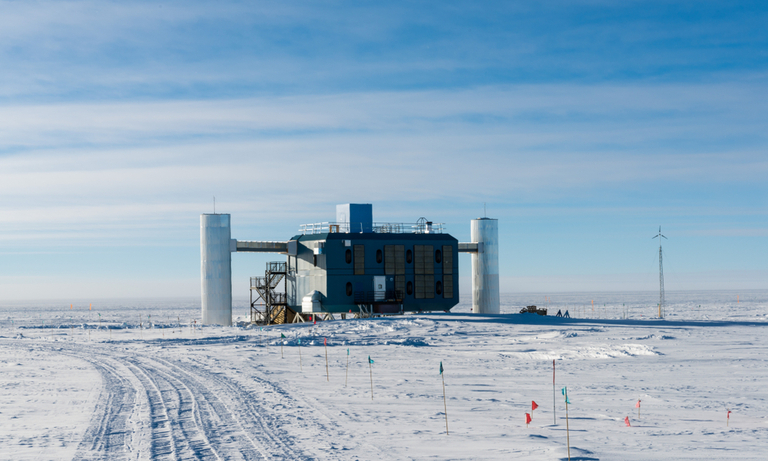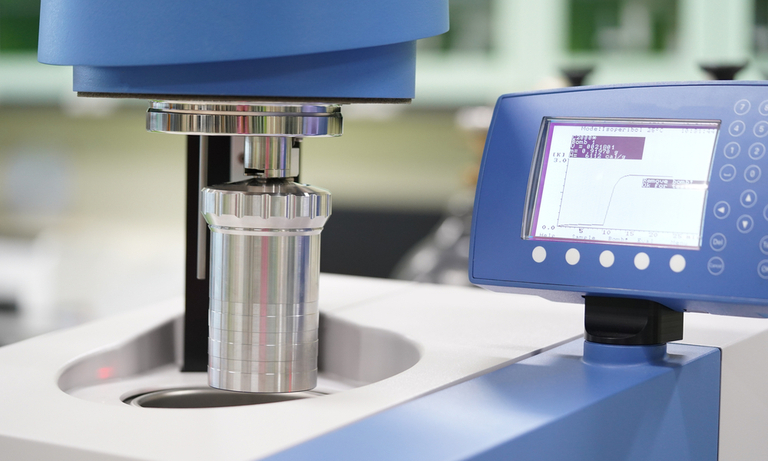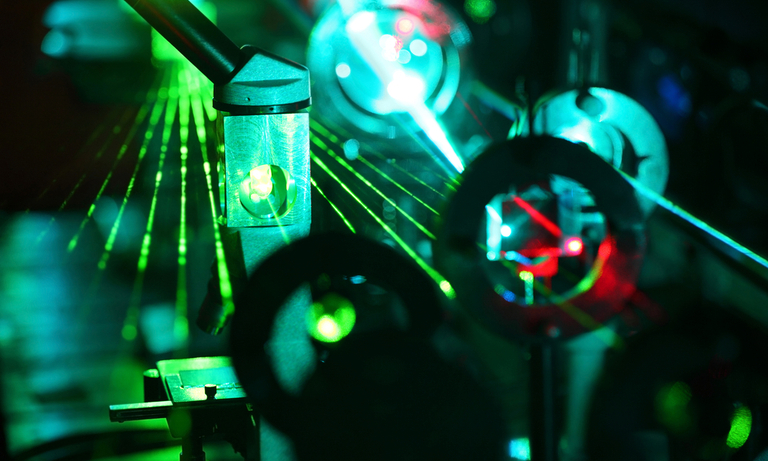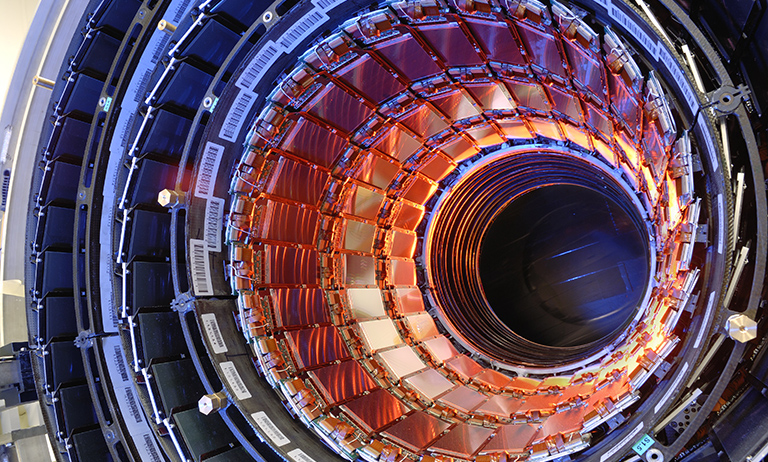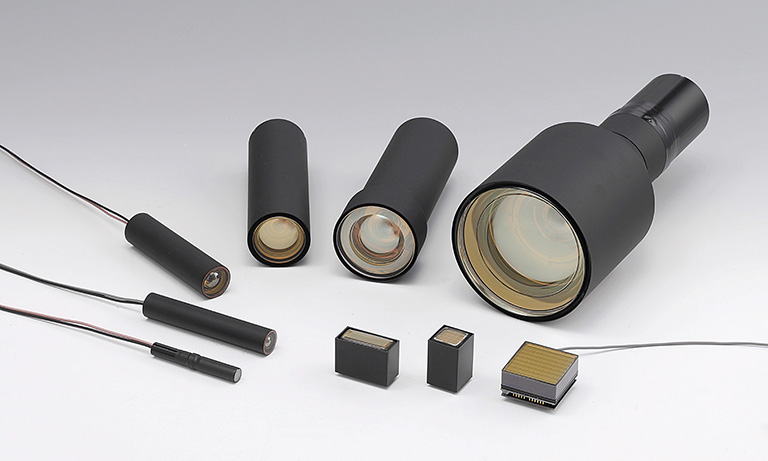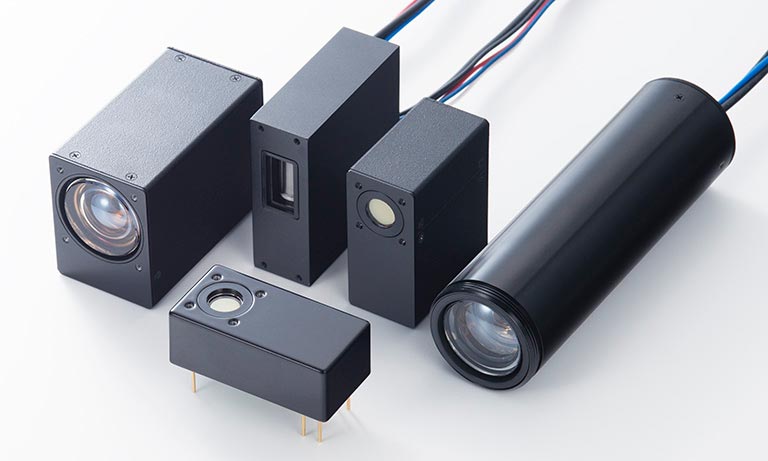Home
Products
Physics Research Field
Type of Experiment
Detector Type
Behind the Science
Tech in a Nutshell
United Kingdom (EN)
Select your region or country.

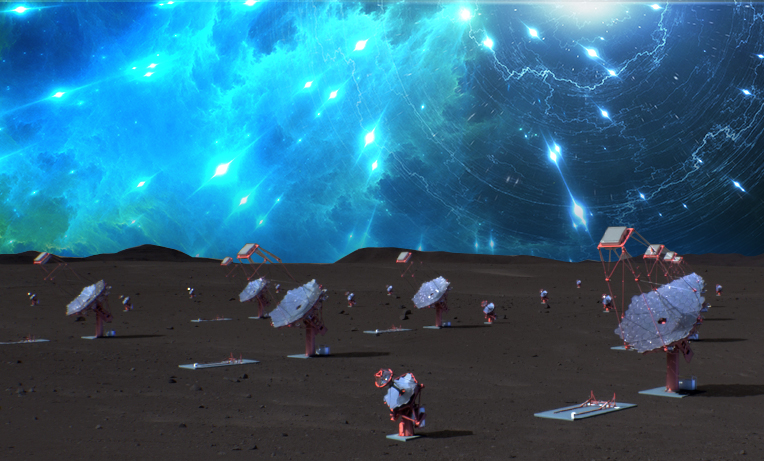
CTAO: The glowing blue makeup of our universe
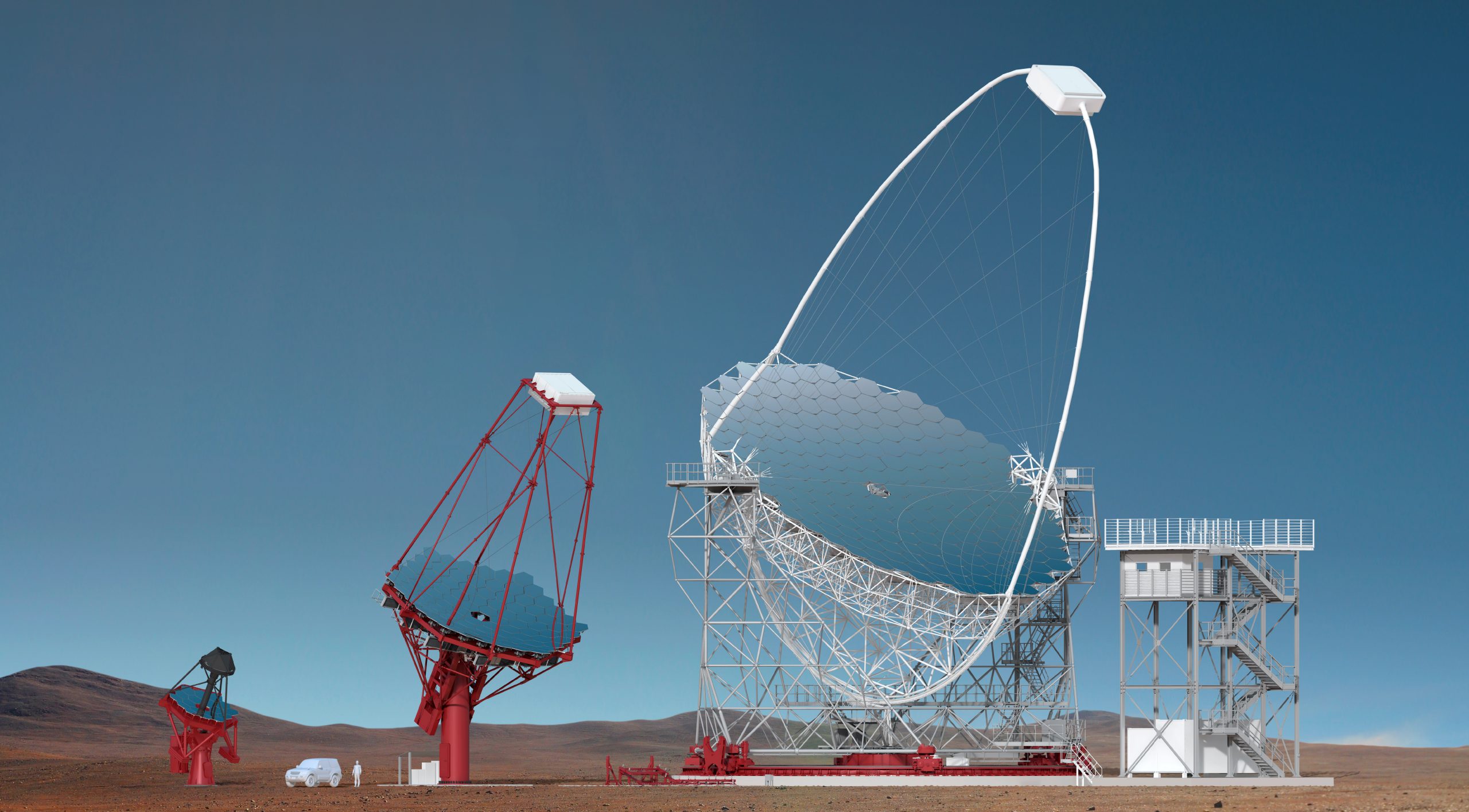
CTAO Telescopes; Three classes of telescopes are required to cover the full CTAO energy range (20 GeV to 300 TeV). © Gabriel Pérez Díaz, IAC
A vision for more
Almost twenty years ago, visionary scientists devised a plan to push the technological boundaries of existing ground-based gamma-ray telescope detectors (H.E.S.S., MAGIC, and VERITAS). These telescopes detect the particle showers released by gamma rays reaching our atmosphere. These ultra-high energy particles create a blue flash of “Cherenkov light”, helping us to address some of the most perplexing questions in astrophysics. Their desire was to create unprecedented technology in terms of sensitivity and accuracy. Thus, was born the idea of the next generation of telescopes, the Cherenkov Telescope Array Observatory (CTAO) surpassing its predecessors in terms of number, size, and technology.
Fast forward to today, the CTAO is now a multinational project that will become the world’s largest and most sensitive observatory for gamma-ray astronomy, supported financially by a growing list of shareholders from more than ten countries and an intergovernmental organisation. With more than 60 telescopes located in the northern and southern hemispheres, the CTAO will be up to 10 times more sensitive than any current instrument and will explore the very high-energy Universe within an unprecedented energy range (20 GeV – 300 TeV). The CTAO’s unique capabilities will help address some of the most perplexing questions in astrophysics. The Observatory will seek to understand the impact of high-energy particles in the evolution of cosmic systems, to gain insight into the most extreme sources in the Universe, such as black holes, or to search for dark matter and deviations from Einstein’s theory of relativity. Moreover, the CTAO will be the first observatory of its kind to operate as an open, proposal-driven observatory providing public access to its high-level science data and software products.
The CTAO was promoted to a “Landmark” on the European Forum on Research Infrastructure (ESFRI) Roadmap 2018, and was ranked as the main priority among the new ground-based infrastructures in the ASTRONET Roadmap 2022-2035.
Succeeding in creating such a considerable feat demands innovative technology among many things. Many actors proposed ideas and prototypes over the years aiming to find solutions to overcome the various challenges posed by such an ambitious project. Hamamatsu Photonics, present from the very early scientific discussions, competed with its leading technology - the Photomultiplier Tube (PMT). This was only the start of a journey with many obstacles to face, starting with the customization of a product to exact specifications and trialing it until its success. Not to mention designing different and improved technologies such as Hamamatsu’s groundbreaking MPPC® (Silicon photomultiplier).

Cherenkov Effect; © R. White (MPIK) / K. Bernlohr (MPIK) / DESY
CTAO Science: Emission to Discovery © CTAO
The key is blue
The particularity of the CTAO is its sensitivity to the highest-energy gamma rays. Gamma-ray bursts are powerful events generated from some of the most violent environments in our Universe, such as supernova explosions. In fact, the gamma rays produced by these events are a trillion times more energetic than visible light. Identifying them is not an easy task, as they do not reach the Earth’s surface. However, when passing through the atmosphere, they produce subatomic particle cascades. As these particles descend into our atmosphere, they lose energy and emit Cherenkov radiation. The ultraviolet and finally visible (mostly blue) fraction caused by secondary particles can then be detected from the ground by the telescopes’ high-speed camera.
CTAO’s telescopes differ in size and in number as they aim to capture all the various energy spans. First, their large mirrors collect the glowing blue light, which is then detected by the high-speed PMT camera system. The light flashes are so faint and short (a few billionths of a second), it is not possible to see without this highly sophisticated technology. The PMTs detect the light flashes and amplify them in a compact, low noise, and wide dynamic range gain block. The information is then converted into a measurable electronic signal.
Early discussions projected the need for 200,000 PMTs to fulfill the whole range of telescopes. This demanded a colossal undertaking in terms of providing consistent quality to meet custom specifications. PMTs are mostly made by hand, and their assembly is an arduous task. Therefore, manufacturing and testing such a large number throughout each phase is both time-consuming and costly. One of the major pain points was also achieving high sensitivity through high quantum efficiency in order to detect the faintest light signals. This challenge limited the maximum gain of the PMT. Timing, as mentioned, is also crucial; any signal delay means missing or providing distorted data. To maintain the time window low, PMTs need to be fast and small with a highly efficient photocathode.
In addition, the after-pulse generated created a source of wrong signals that had to be minimized. Identifying the root of these challenges lead to a better understanding of materials and procedures in the manufacturing process.
Enabled by the EU FP7 program for the CTAO preparatory phase, many institutes, universities, and their laboratories, in collaboration with Hamamatsu, have been involved in improving these PMT properties. In parallel, given some of the technological challenges surrounding PMTs, the development of highly sensitive light detectors based on semiconductor technology, the MPPC®* was requested. The shape, dimensions, and microcell size of the MPPC®s, were evaluated from a fully customized hexagonal structure to a more typical square with 75 x75 μm cells. The technology required did not exist, yet scientists collaborating with Hamamatsu researchers worked together to find the optimal solution.
*Silicon photomultiplier made by Hamamatsu Photonics

CTAO-South Rendering; © CTAO
Improving technology over decades of collaboration
Over nearly twenty years of collaboration, scientists and Hamamatsu continue to push design ideas for both PMTs and MPPC®s.
The evaluation of the PMT design was reviewed and adjusted many times creating, for example, the SBA (Super bialkali) photocathode with increased quantum efficiency compared to common bialkali photocathodes. The idea was to replace the 1” PMT with a newly developed one, which limited amplification while still maintaining the advantage of time speed. As there was less gain needed, one dynode was removed.
As the MPPC® manufacturing process is quicker (using fewer parts, which can be mass-produced and lightweight materials), they have proven to be more cost-effective in large-scale production. Over the years, their technology improved drastically on many levels. One example is how Hamamatsu limited the crosstalk by adding trenches, effectively reducing the possibility of fake signals. Another is how the pulses improved over time.
Currently, as CTAO telescopes are in their advanced stages of development, thousands of PMTs and MPPC®s are being produced and tested. The expected results obtained from the CTAO will provide insights into distant galaxies and extreme particle accelerators in space. Once completed, the hope is to accomplish a completely new view of the night sky and ultimately our universe.
Related products & information
- Confirmation
-
It looks like you're in the . If this is not your location, please select the correct region or country below.
You're headed to Hamamatsu Photonics website for GB (English). If you want to view an other country's site, the optimized information will be provided by selecting options below.
In order to use this website comfortably, we use cookies. For cookie details please see our cookie policy.
- Cookie Policy
-
This website or its third-party tools use cookies, which are necessary to its functioning and required to achieve the purposes illustrated in this cookie policy. By closing the cookie warning banner, scrolling the page, clicking a link or continuing to browse otherwise, you agree to the use of cookies.
Hamamatsu uses cookies in order to enhance your experience on our website and ensure that our website functions.
You can visit this page at any time to learn more about cookies, get the most up to date information on how we use cookies and manage your cookie settings. We will not use cookies for any purpose other than the ones stated, but please note that we reserve the right to update our cookies.
1. What are cookies?
For modern websites to work according to visitor’s expectations, they need to collect certain basic information about visitors. To do this, a site will create small text files which are placed on visitor’s devices (computer or mobile) - these files are known as cookies when you access a website. Cookies are used in order to make websites function and work efficiently. Cookies are uniquely assigned to each visitor and can only be read by a web server in the domain that issued the cookie to the visitor. Cookies cannot be used to run programs or deliver viruses to a visitor’s device.
Cookies do various jobs which make the visitor’s experience of the internet much smoother and more interactive. For instance, cookies are used to remember the visitor’s preferences on sites they visit often, to remember language preference and to help navigate between pages more efficiently. Much, though not all, of the data collected is anonymous, though some of it is designed to detect browsing patterns and approximate geographical location to improve the visitor experience.
Certain type of cookies may require the data subject’s consent before storing them on the computer.
2. What are the different types of cookies?
This website uses two types of cookies:
- First party cookies. For our website, the first party cookies are controlled and maintained by Hamamatsu. No other parties have access to these cookies.
- Third party cookies. These cookies are implemented by organizations outside Hamamatsu. We do not have access to the data in these cookies, but we use these cookies to improve the overall website experience.
3. How do we use cookies?
This website uses cookies for following purposes:
- Certain cookies are necessary for our website to function. These are strictly necessary cookies and are required to enable website access, support navigation or provide relevant content. These cookies direct you to the correct region or country, and support security and ecommerce. Strictly necessary cookies also enforce your privacy preferences. Without these strictly necessary cookies, much of our website will not function.
- Analytics cookies are used to track website usage. This data enables us to improve our website usability, performance and website administration. In our analytics cookies, we do not store any personal identifying information.
- Functionality cookies. These are used to recognize you when you return to our website. This enables us to personalize our content for you, greet you by name and remember your preferences (for example, your choice of language or region).
- These cookies record your visit to our website, the pages you have visited and the links you have followed. We will use this information to make our website and the advertising displayed on it more relevant to your interests. We may also share this information with third parties for this purpose.
Cookies help us help you. Through the use of cookies, we learn what is important to our visitors and we develop and enhance website content and functionality to support your experience. Much of our website can be accessed if cookies are disabled, however certain website functions may not work. And, we believe your current and future visits will be enhanced if cookies are enabled.
4. Which cookies do we use?
There are two ways to manage cookie preferences.
- You can set your cookie preferences on your device or in your browser.
- You can set your cookie preferences at the website level.
If you don’t want to receive cookies, you can modify your browser so that it notifies you when cookies are sent to it or you can refuse cookies altogether. You can also delete cookies that have already been set.
If you wish to restrict or block web browser cookies which are set on your device then you can do this through your browser settings; the Help function within your browser should tell you how. Alternatively, you may wish to visit www.aboutcookies.org, which contains comprehensive information on how to do this on a wide variety of desktop browsers.
5. What are Internet tags and how do we use them with cookies?
Occasionally, we may use internet tags (also known as action tags, single-pixel GIFs, clear GIFs, invisible GIFs and 1-by-1 GIFs) at this site and may deploy these tags/cookies through a third-party advertising partner or a web analytical service partner which may be located and store the respective information (including your IP-address) in a foreign country. These tags/cookies are placed on both online advertisements that bring users to this site and on different pages of this site. We use this technology to measure the visitors' responses to our sites and the effectiveness of our advertising campaigns (including how many times a page is opened and which information is consulted) as well as to evaluate your use of this website. The third-party partner or the web analytical service partner may be able to collect data about visitors to our and other sites because of these internet tags/cookies, may compose reports regarding the website’s activity for us and may provide further services which are related to the use of the website and the internet. They may provide such information to other parties if there is a legal requirement that they do so, or if they hire the other parties to process information on their behalf.
If you would like more information about web tags and cookies associated with on-line advertising or to opt-out of third-party collection of this information, please visit the Network Advertising Initiative website http://www.networkadvertising.org.
6. Analytics and Advertisement Cookies
We use third-party cookies (such as Google Analytics) to track visitors on our website, to get reports about how visitors use the website and to inform, optimize and serve ads based on someone's past visits to our website.
You may opt-out of Google Analytics cookies by the websites provided by Google:
https://tools.google.com/dlpage/gaoptout?hl=en
As provided in this Privacy Policy (Article 5), you can learn more about opt-out cookies by the website provided by Network Advertising Initiative:
http://www.networkadvertising.org
We inform you that in such case you will not be able to wholly use all functions of our website.
Close



